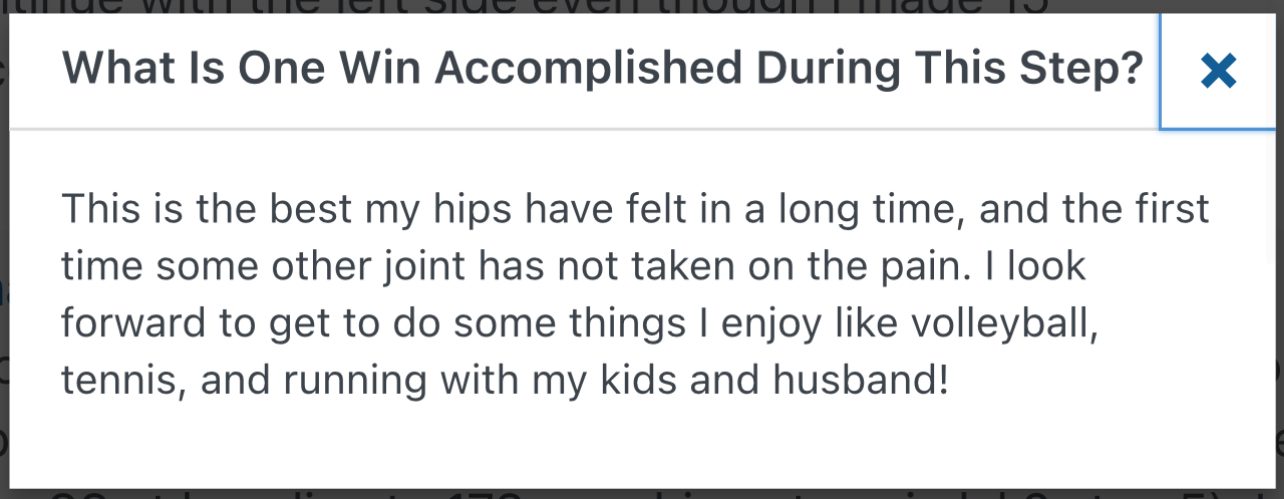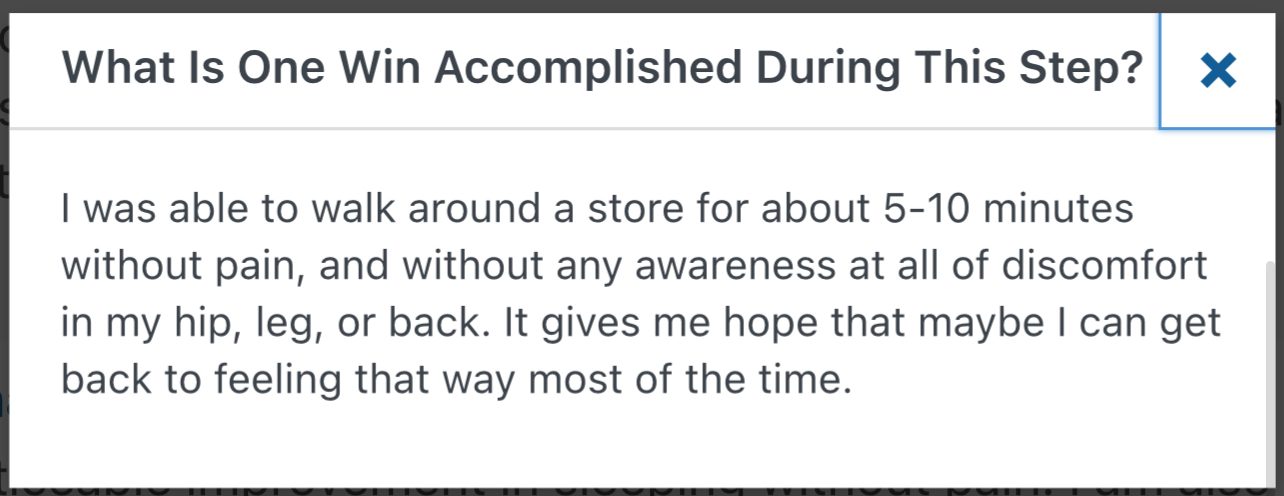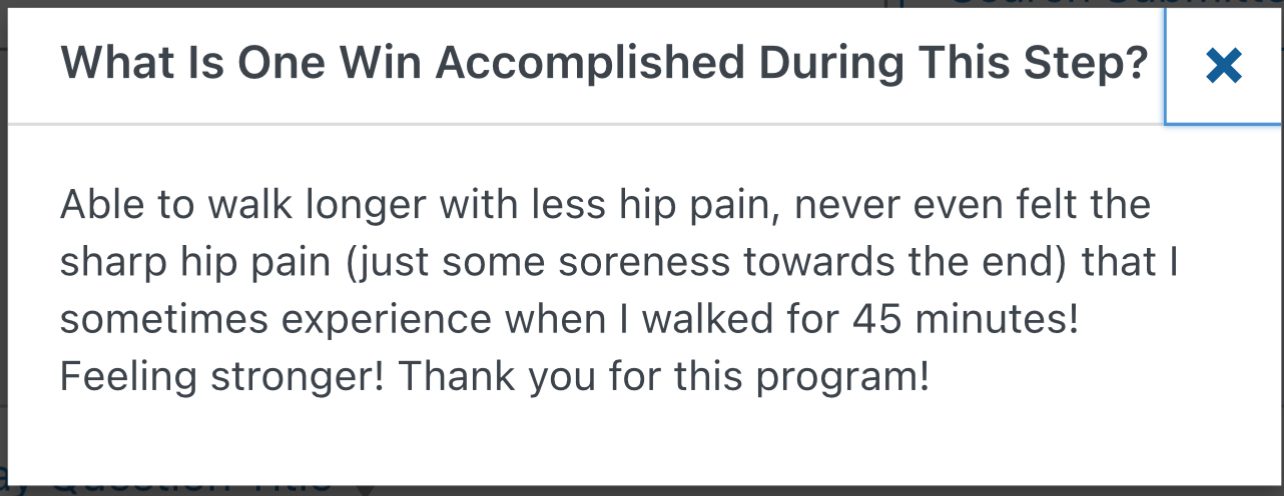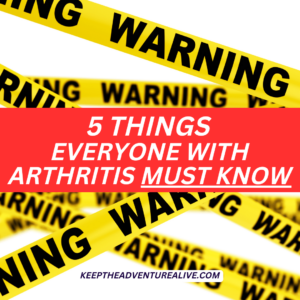Osteoarthritis of the hip joint can be frustrating and it can be a tricky journey to pain relief. There are certain things you can do to avoid surgery as surgery is not your only option! It is common belief that if you have hip osteoarthritis, the only way to relieve pain is through getting a new joint! It has been found that there are conservative treatments to relieve arthritic hip pain, you just have to know the right things to do.
This article contains affiliate links that grant us a small commission with no added cost to you.
Don’t get me wrong- there certainly can be a time and a place for a joint replacement surgery. But surgery is not inevitable with osteoarthritis of the hip joint. Here is an article that can help you decide whether surgery is appropriate for you right now.
Before deciding on surgery it’s important to implement other non-surgical, conservative strategies first. You may be surprised by the level of relief you feel and how much function you’re able to get back.
As a physical therapist who used to work in home care, seeing patients after total knee and hip replacements, I found that many people were getting surgery prematurely…
If you don’t take the time to strengthen the joint, fuel your body with the right foods,
The journey to relief from osteoarthritis of the hip joint is not an easy one. But it can be so rewarding if you know the exact steps you need to take. So many spend an incredible amount of time searching for answers while being passed from doctor to doctor only to find short term solutions.
There are options even if you have hip osteoarthritis and there is hope! Take it from members of the arthritis workout membership Adventurers for Life.




7 ways to avoid surgery with osteoarthritis of the hip joint
Not all of these tips may apply to you and that is totally fine! My goal is for you to take at least 3-4 of these tips and begin implementing them into your daily life.
Remember your hip osteoarthritis likely didn’t happen overnight so results may not either. As much as I wish I had a magic wand to be able to give you quick pain relief, the slower the journey, the more sustainable it is.
Patience with yourself is incredibly important. Your journey will not be perfect. You will have ups and downs but I want you to remember that you can do this. Remember what pain relief can unlock for you.
1. The Power of Food
Food can be incredibly powerful both at increasing and reducing osteoarthritis of the hip joint symptoms. In order to use food to your benefit you have to make sure you are including two things:
- Anti inflammatory foods
- Enough protein
These are the two things I always start with clients as far as food is concerned. Too often, we tend to overlook the basics. So let’s take a little deeper dive.
Anti inflammatory foods are vital to keep inflammation levels lower in your body. When inflammation levels rise, pain and stiffness may also rise. You can see this instagram post here talking about inflammatory foods.
Most of the time, avoiding a majority of processed foods and sugars can bring great benefit to both pain and stiffness. This is not saying you can never eat these foods, but moderation is key. Here is a list of anti-inflammatory foods you can download.
As far as protein is concerned, as a culture, especially as we get older, we tend to decrease protein intake. Protein is incredibly important for muscle building, helping to prevent insulin resistance (contributing to weight gain), and other vital body functions.
You can read more detail about protein here. Research has shown that protein can actually be almost as effective as ibuprofen for some joints pains, say what!
The baseline for protein consumption is usually around 100 grams but will depend on your weight too. Getting enough protein should be one of the first modifications you make once cleared from your physician (increased protein can impact some medical conditions including kidney diseases).
2. Movement Variety + Strength
This one is absolutely critical.
Think about your exercise, whether you typically do one or two activities like walking, if it’s non-existent, or if consistency tends to waiver.
As humans, we typically move in a forward direction. As we get older, we tend to lack variety in movement, i.e moving sideways and backwards.
As we complete repetitive forward motions during the day then walk for exercise, again in a forward direction, you can put a lot of stress on one area of the hip joint. This can lead to pain and irritation.
Building muscle strength is key to prevent over stressing of the joint and to help absorb stress. The hip needs help from muscles on all sides of the joint: front, side and back.
One simple way to start with strengthening is to add in simple sideways and backwards movements. This can help to use the muscles that are responsible for supporting the hip.
Here are some other examples of ways you can use variety to strengthen arthritic hips:
3. Focus on Balance
Your hip muscles play a key role in keeping you balanced and upright. Without the proper stability and muscle control with osteoarthritis of the hip joint- your hip may become more irritated. You also may be at a higher risk for a fall.
Poor balance can also affect confidence and ability to walk. Many people with hip osteoarthritis become hesitant when walking and may experience other compensations like limping and shortened step length.
Working on improving balance can be critical to finding hip pain relief but also being able to do what you love again.
If you are dealing with higher levels of pain, working towards getting used to putting full weight on that leg is a great goal to work towards. Use support at first until you start building more confidence.
Here is a short video below that discusses one key thing you need to focus on to improve your balance:
4. Stretching is not the answer for stiff hips
Hip stiffness typically happens for a couple of reasons:
- Muscle tightness secondary to weakness. Muscles tighten up for stability as they are not getting it from strength.
- Irritation due to increased pain. Tightening muscles can be an action to protect the joint.
- The less you use the joint, the tighter the muscles can become.
One of the common misconceptions for tight muscles is to stretch them. Think about it though, if the muscle is tight for a reason, the muscle will likely revert back to the same tightness once stretching is stopped or shortly after.
When looking at osteoarthritis of the hip joint, it is so important to find ways to improve mobility-but stretching likely isn’t the best way.
When improving mobility, I encourage dynamic movement. Getting your hip joint to move through different ranges of motion while building strength and confidence will help to produce long term results.
The idea is to contract the muscles then allow them to relax.
Here is a full, follow along workout to improve hip flexibility with almost NO stretching! Give it a try and see how you feel!
5. Take care of your feet
Your feet are the first connection to the ground that you have with each step. It is incredibly important to keep happy and supported.
If your feet and ankles become unhappy, then it alters the way you move. It can cause your calf muscles to become tight, your steps to become shorter, and your walking pattern to change that all can actually contribute to more hip pain.
So how do you take care of your feet? It all starts with good shoes. One of my favorite brands is KURU, based in here in Salt Lake City. I have many clients with osteoarthritis of the hip joint that have loved these shoes.
I have the Kuru Atoms and the Kuru Flux and I love them. The Atoms have more structural support and the Flux are more lightweight. You can learn more about the shoes here.
If your feet are supported, they will help to absorb some of the shock so your hips aren’t taking more than they are prepared for.
6. Find Support
For many of these changes, it requires a degree of dedication and commitment to avoid hip replacement surgery, i.e committing to changes to your eating habits and increasing exercise.
It can be hard to do this alone. It can be hard to keep going when you feel like no one understands you pain.
It can be helpful to find support from family, friends, or even strangers going through the same thing you are!
Inside of the membership, Adventurers for Life you’ll have the opportunity to join in on monthly support groups with other members who understand what you’re going through. You’ll also be able to collaborate with others to discuss pain management strategies, wins, goals and more!
Together, we can accomplish so much. You truly don’t have to be alone on this journey. It’s not a perfect journey and having a group or a person you can rely on during the bad days can truly help to bring long term pain relief.
7. Consistency is Key
The only way you will be able. to find long term success and osteoarthritis pain relief is to be consistent. Without consistency, pain from osteoarthritis of the hip joint will continue.
If you want to adventure and stay active, staying true to yourself and your goals is incredibly important.
I often find that without accountability, many tend to give up right as they are on the cusp of amazing success. There are times when it is not easy to continue but you have to keep reminding yourself why you are doing this.
What is one reason you want to avoid surgery and find pain relief. Does that mean you’ll be present for your grandkids? Be able to travel with your family? Actually enjoy your life the way you want to?
This reason can keep you going.
It is so critical to get movement at least 3-5 days per week. To eat an anti-inflammatory diet and get adequate amounts of protein as often as possible.
It can be difficult to figure out where to get started. Join in the FREE 3 Day Walking Workout Challenge to get a head start on strengthening, balance and stamina- no matter your fitness level. Learn more about it below:
Alyssa Kuhn
Disclaimer: This post is for general informational purposes only. It should not be used to self-diagnose and it is not a substitute for a medical exam, cure, treatment, diagnosis, and prescription or recommendation. It does not create a doctor-patient relationship between Dr. Kuhn and you. You should not make any change in your health regimen or diet before first consulting a physician and obtaining a medical exam, diagnosis, and recommendation. Move Well Age Well, LLC and Dr. Alyssa Kuhn, PT, DPT are not liable or responsible for any advice, course of treatment, diagnosis or any conclusions drawn, services or product you obtain through this video or site.

If you are looking to regain your active life but are unsure where to start, join the revolutionary membership, Adventurers for Life. This is a step-by-step path that not only will help you find pain relief but will help you unlock adventure. You’ll get workouts, tests to pass to make sure you are on the right track, community events and MORE.




